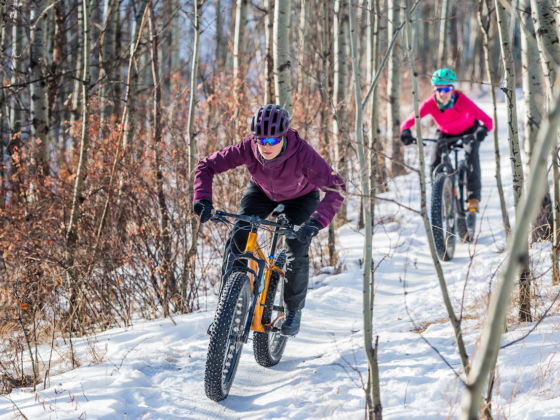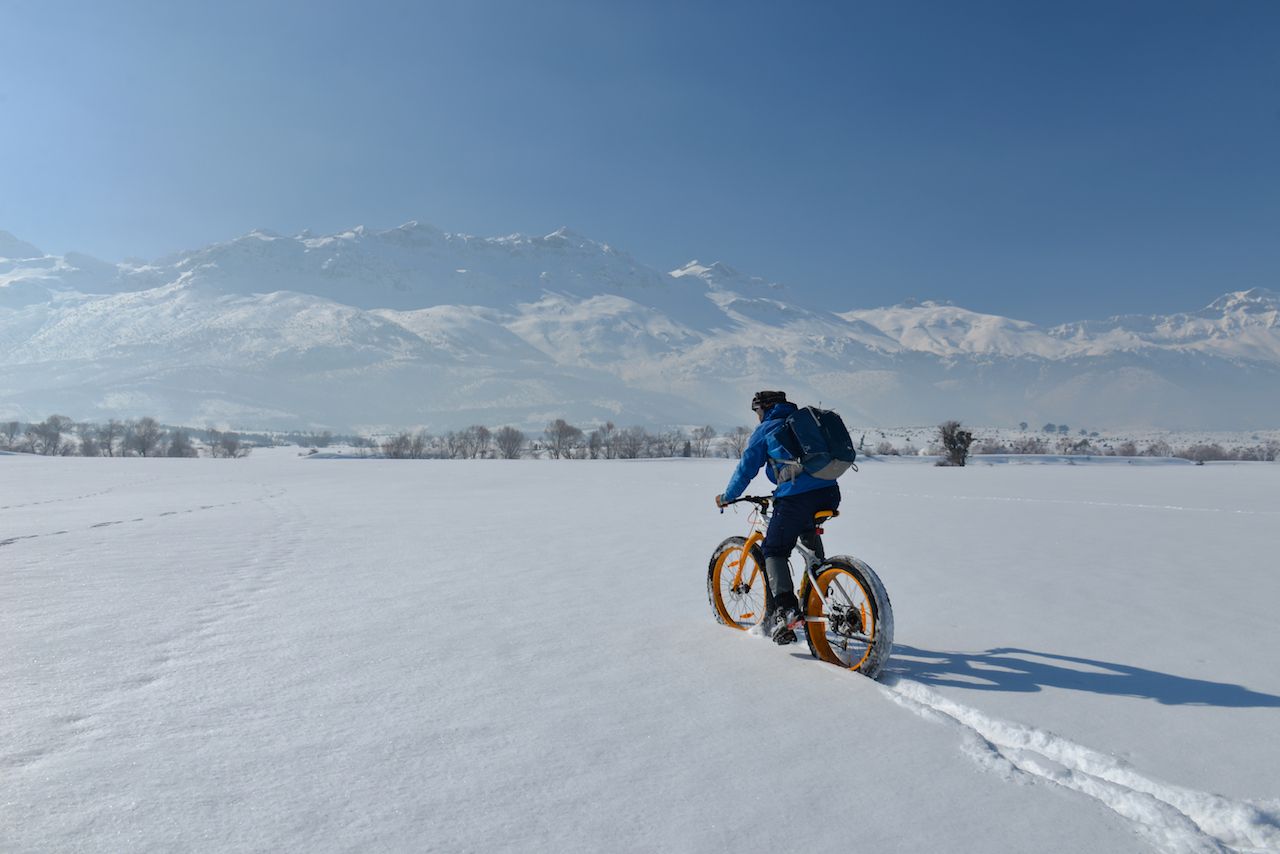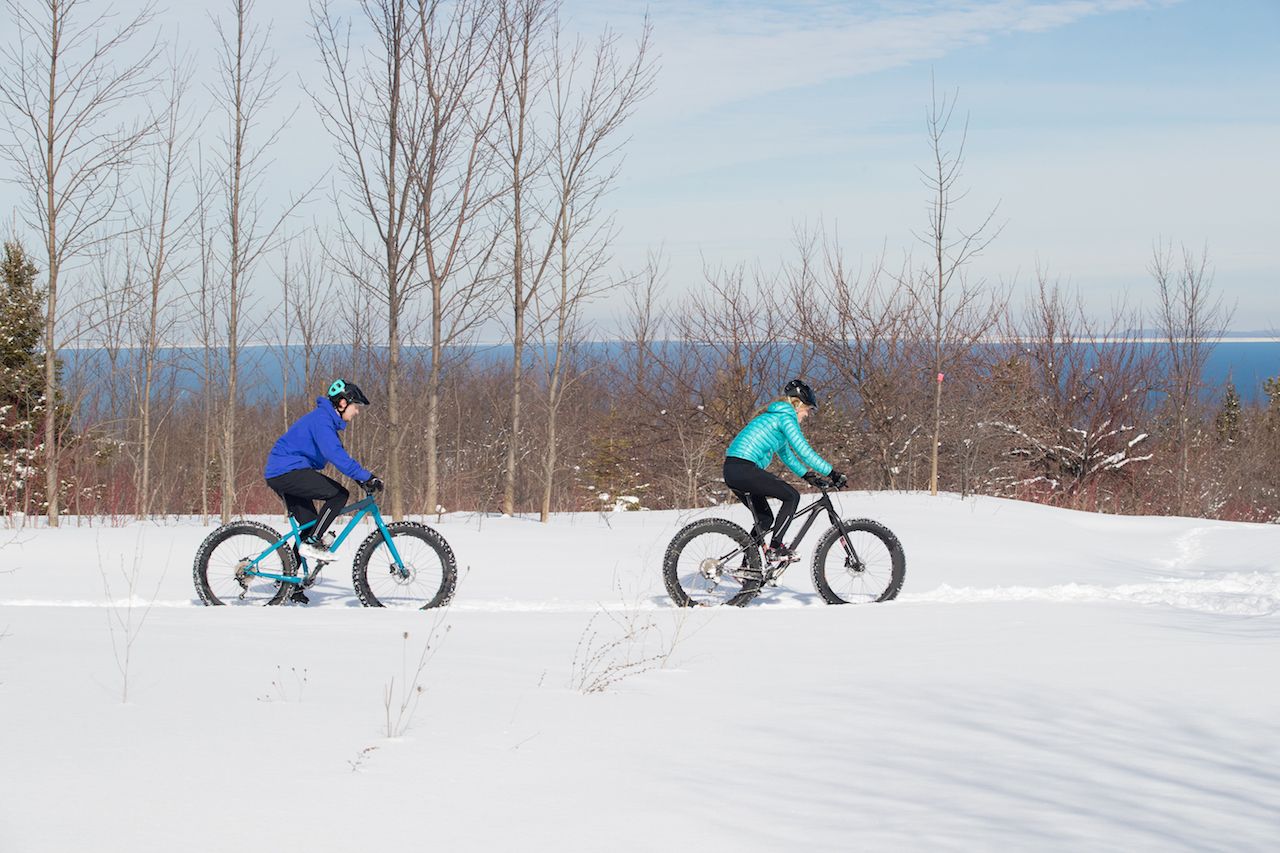Biking has evolved drastically since its early days. When Baron Karl von Drais first mounted wheels to his “running machine” in 1817, he likely didn’t envision people flying down mountains or crossing the whole of France on his invention. Today, the latest cycling iteration is fat biking. Fat bikes look like someone stole the wheels off their motocross setup and implanted them onto their bicycle. The real story is more practical: making a beloved sport possible no matter what Mother Nature has in mind. Here’s where that rider is headed with that crazy-looking bike.

Think pedal-powered off-roading.

Photo: crazymedia/Shutterstock
The evolution of fat biking can be traced back to the burning desire of die-hard cyclists of all stripes to eliminate disheartening phrases from their vocabulary, including, “I can’t ride today because the weather sucks.”
If you’ve ever tried to ride a road bike after a snowstorm, you can attest to this statement. Fat bikes are the solution since their tires are typically at least 3.8” wide and made with traction more in-line with the snow tires on your Subaru than with normal bike tires. Fat bikes are made to be ridden in snow, downhill, and across varying types of terrain. Experienced riders usually deflate the tires to a pressure point far lower than normal in order to better absorb different levels of snow hardness and other obstacles covering their path. Because the tires are designed for snow, a good rider can pedal across even the fluffiest of powder without sinking.
It’s a damn good workout.

Photo: GROGL/Shutterstock
Fat biking has risen in popularity not just because it’s badass and allows for four-season touring — but also because it’s one hell of a workout. Biking is already great exercise, burning about 650 calories per hour in normal conditions. Fat biking more than doubles that if you’re pushing through powder. Those with sensitive knees rejoice since fat biking is on par with running in its intensity, without the constant joint-pounding that comes with jogging on pavement. You can also move a lot faster than you could with snowshoes or cross-country skis, with the added benefit of actually looking forward to the downhill parts of the trail.
They’re ideal for sand, also.

Photo: mimmikhail/Shutterstock
Let’s face it. As fun as it is to pedal through slightly dampened sand, basket full of rum and fresh fruit, handlebar streamers blowing in the seaside breeze, it’s hard to look like a gnarly shredder on a beach cruiser. You’re not winning any brownie points in the adventure travel community, and if you need to head anywhere with a slope angle greater than 5 degrees or will be riding over jagged, soft, or obtuse surfaces — forget about it. You might as well walk.
Or get yourself a fat bike, because the tires are such that even soft and dry sand won’t slow you down. They’re great for bike touring across variable terrain whether it’s winter or not, which is why you keep seeing them on the beach and the outskirts of town with a duffel strapped to the back. If you’re unsure as to whether or not your current setup can handle everything coming at you on an upcoming trip, odds are a fat bike can put your mind at ease.
“Ok, I’m sold. How do I get started?”

Photo: Grisha Bruev/Shutterstock
Riding a fat bike is most like riding a mountain bike. They are designed to be versatile and durable, able to withstand the scratch-and-tumble that comes with the learning process and rideable in any type of terrain. Most full-service mountain bike shops now sell fat bikes, and many even rent them. Plan to spent upwards of $1,000 to buy one — though cheap knockoffs are available for less.
If you’re new to biking, fat bikes can actually be a great welcome to the sport because they’re extremely well-balanced. You’ll of course want a helmet, along with biking gloves and proper athletic attire to soak up the sweat from your workout. All told, you can be out the door and on the trail on your own brand new setup for under $1,500, a hefty upfront investment but one that can last a lifetime if you maintain your gear. If you want to see how the experts roll or find some people to do a ride with, check out the ever-increasing calendar of competitions, festivals, and events from fatbike.com.